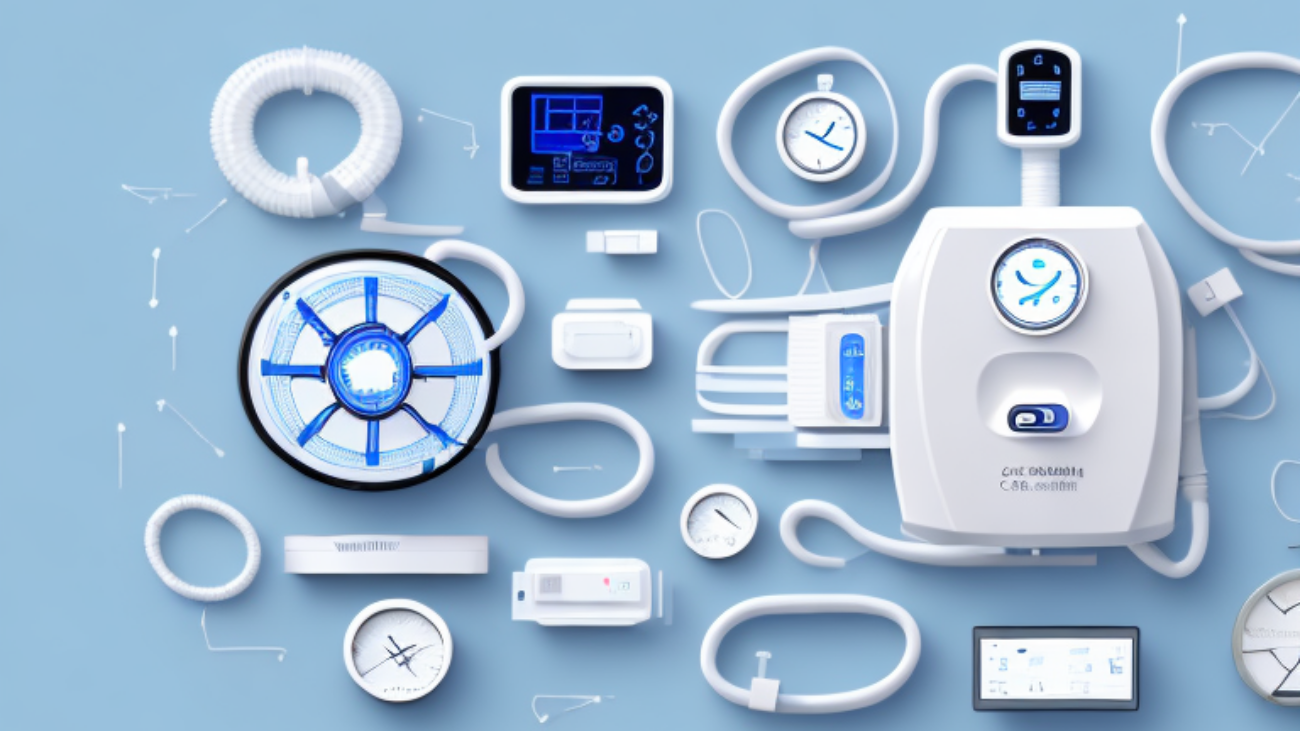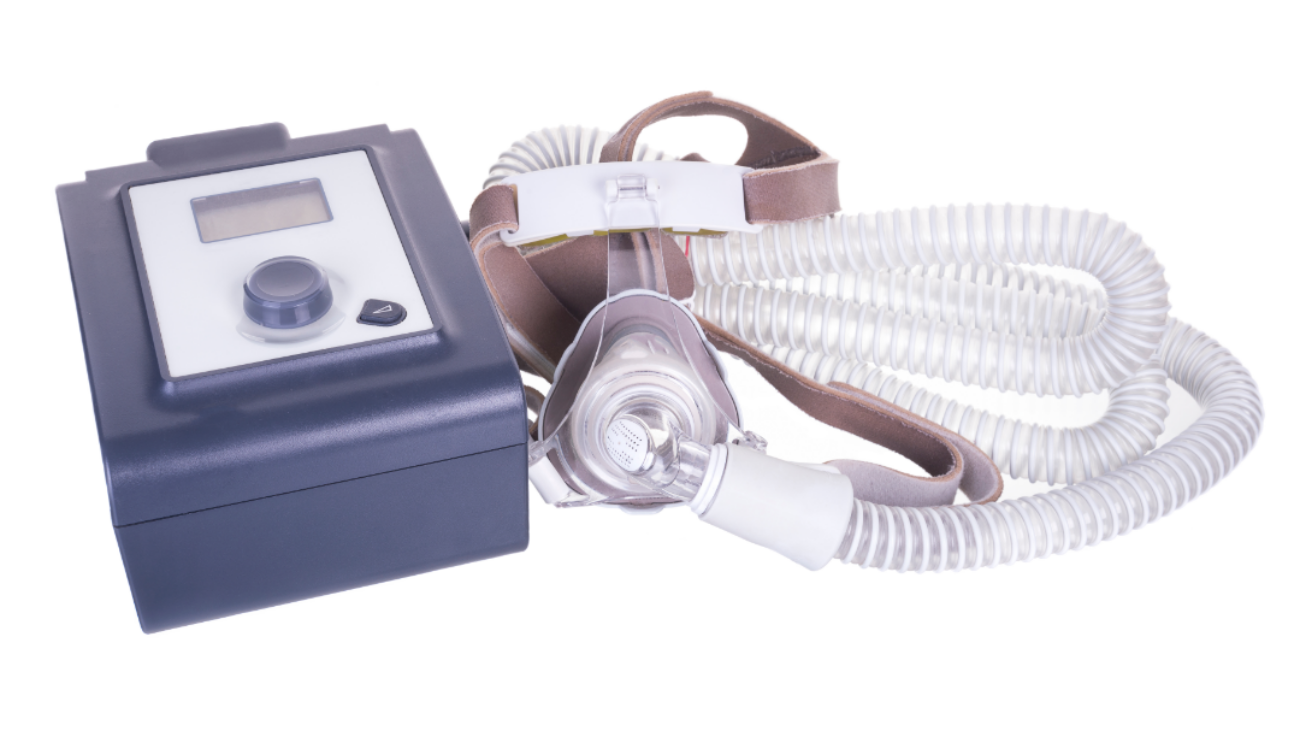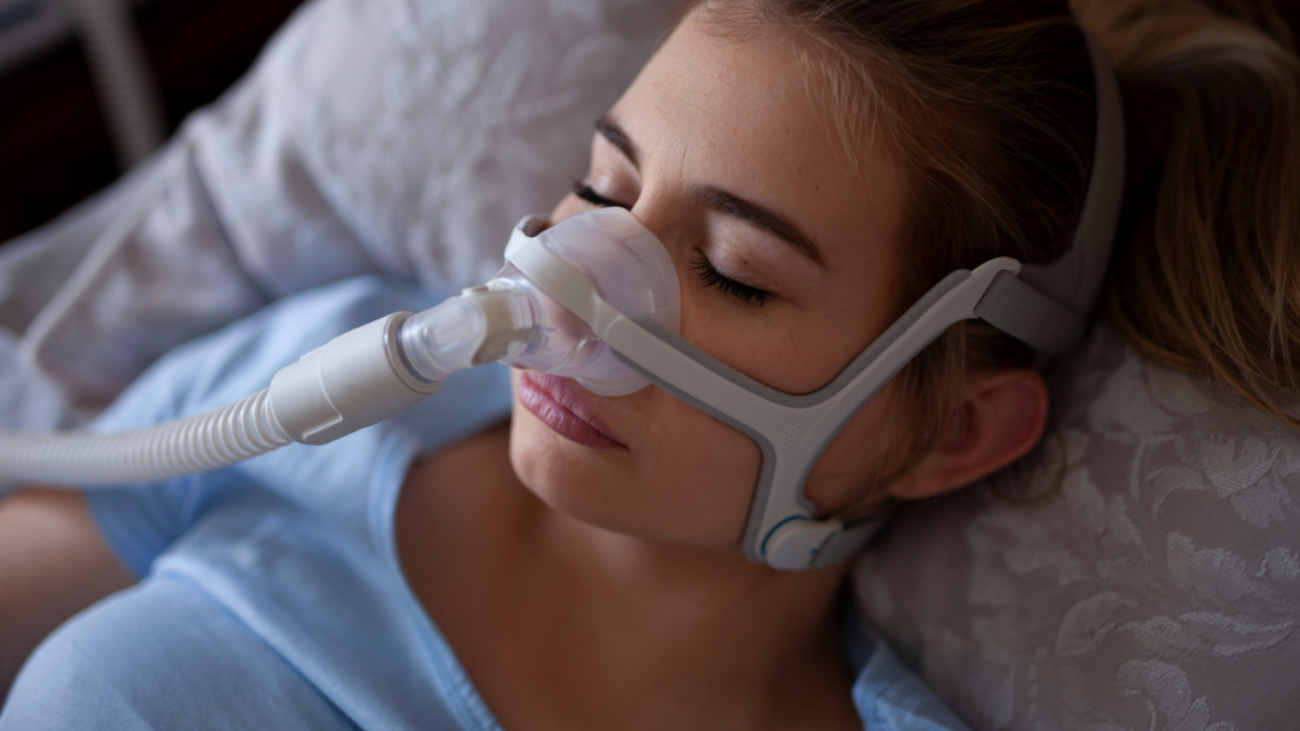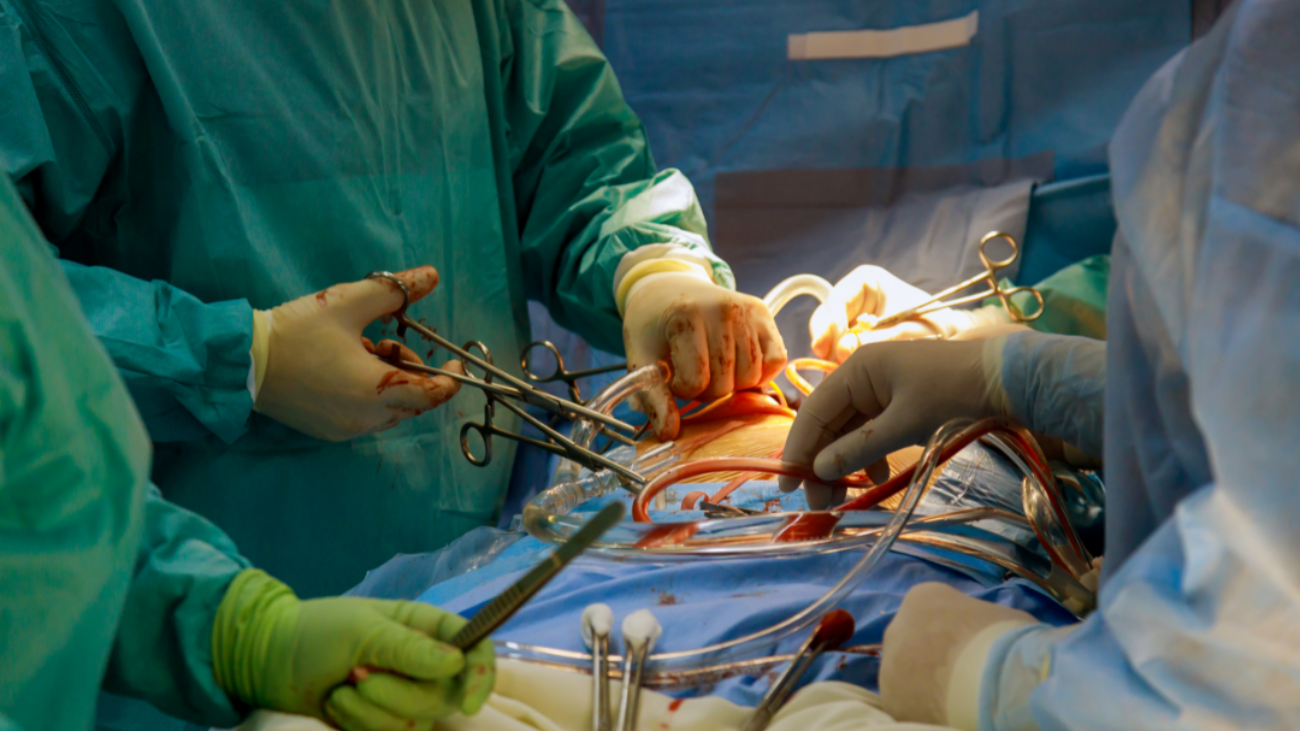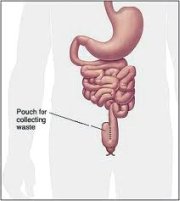If you have been recently diagnosed with sleep apnea, you may have heard about CPAP machines. These devices are often recommended as a treatment option for managing sleep apnea. However, choosing the right CPAP machine for your needs can be a challenging task. With so many options available in the market today, it’s important to understand the factors to consider before making a decision. In this guide, we will walk you through everything you need to know about choosing the right CPAP machine, from understanding sleep apnea to different types of machines and their features.
Understanding Sleep Apnea and the Role of CPAP Machines
Sleep apnea is a sleep disorder characterized by pauses in breathing or shallow breaths during sleep. These pauses in breathing can occur multiple times an hour and can last for several seconds. Sleep apnea can cause disrupted sleep and lead to various daytime symptoms such as excessive daytime sleepiness, morning headaches, and difficulty concentrating.
While sleep apnea is a common condition, it is important to understand that there are different types of sleep apnea that can affect individuals in various ways. Sleep apnea can be classified into three main types:
- Obstructive sleep apnea (OSA) is the most common type of sleep apnea. It occurs when the muscles in the back of the throat relax and collapse, blocking the airway.
- Central sleep apnea (CSA) occurs when the brain does not send the proper signals to the muscles that control breathing.
- Complex sleep apnea (CompSA) is a combination of OSA and CSA.
CPAP machines are a common treatment for sleep apnea. They deliver a constant stream of pressurized air through a mask that is worn over the nose and/or mouth. This helps to keep the airway open during sleep, preventing pauses in breathing.
CPAP machines are effective in treating sleep apnea and can improve a person’s quality of life. However, they can be uncomfortable to wear at first. It is important to find a machine that fits well and is comfortable to use.
If you think you may have sleep apnea, it is important to see a doctor for diagnosis and treatment. CPAP machines can help you to get a good night’s sleep and improve your overall health.
Here are some additional benefits of using CPAP machines:
- They can reduce the risk of heart disease, stroke, and other health problems.
- They can improve your mood and energy levels.
- They can help you to think more clearly and concentrate better.
If you are interested in learning more about CPAP machines, talk to your doctor. They can help you determine if CPAP therapy is right for you and recommend a machine that is right for you
What is Sleep Apnea?
Obstructive sleep apnea (OSA) is the most common form of sleep apnea and occurs when the upper airway becomes partially or completely blocked during sleep. This blockage can be caused by factors such as excess weight, enlarged tonsils, or a narrow airway. When the airway is blocked, it leads to pauses in breathing and disrupted sleep patterns.
On the other hand, central sleep apnea (CSA) occurs when the brain fails to send the right signals to the muscles that control breathing. This can result in a lack of effort to breathe during sleep, leading to pauses in breathing. Unlike OSA, which is caused by a physical blockage, CSA is a neurological condition that affects the respiratory control centers in the brain.
Complex sleep apnea (CompSA) is a combination of both obstructive and central sleep apnea. It occurs when an individual initially has obstructive sleep apnea, but the use of continuous positive airway pressure (CPAP) therapy reveals the presence of central sleep apnea as well. Visit https://probiotics-help.com/the-role-of-cpap-machines-in-sleep-apnea-treatment/ to read about The Role of CPAP Machines in Sleep Apnea Treatment.

How Does a CPAP Machine Work?
A CPAP (continuous positive airway pressure) machine is the most common treatment for sleep apnea. It works by delivering a constant flow of air pressure through a mask that is worn over the nose or mouth. This air pressure helps to keep the airway open and prevents the collapse that causes sleep apnea events.
The CPAP machine consists of a motor that generates the airflow, a humidifier to add moisture to the air, and a mask that delivers the air to the user. The mask can come in various styles, including nasal masks, full-face masks, and nasal pillows, to accommodate different preferences and needs.
By using a CPAP machine, individuals with sleep apnea can experience improved sleep quality and reduced daytime symptoms. The continuous positive airway pressure provided by the machine ensures that the airway stays open, allowing for uninterrupted breathing throughout the night. This helps to eliminate the pauses in breathing and promotes a more restful sleep.
Moreover, the use of a CPAP machine can also have long-term health benefits. By treating sleep apnea, individuals can reduce the risk of developing other health conditions such as high blood pressure, heart disease, and stroke. It can also improve overall quality of life by alleviating symptoms such as fatigue, irritability, and difficulty concentrating.
It is important to note that the effectiveness of a CPAP machine depends on proper usage and maintenance. Regular cleaning of the mask, tubing, and humidifier is necessary to ensure optimal performance and prevent the buildup of bacteria or mold. Additionally, adjusting the air pressure settings based on individual needs and comfort is crucial for maximum benefit.
In conclusion, sleep apnea is a sleep disorder that can have significant impacts on an individual’s overall well-being. Understanding the different types of sleep apnea and the role of CPAP machines in its treatment is essential for managing the condition effectively. By providing continuous positive airway pressure, CPAP machines help keep the airway open and promote uninterrupted breathing during sleep, leading to improved sleep quality and reduced daytime symptoms.
Factors to Consider When Choosing a CPAP Machine
When choosing a CPAP machine, there are several factors to consider to ensure that you find the device that best fits your needs.
Your Specific Sleep Apnea Diagnosis
The first factor to consider is your specific sleep apnea diagnosis. Your sleep specialist or doctor will determine the type and severity of your sleep apnea through a sleep study. Different types of sleep apnea may require different treatment approaches, so it’s essential to choose a CPAP machine designed to address your specific needs.
Comfort and Fit of the CPAP Mask
The comfort and fit of the CPAP mask play a crucial role in long-term compliance with therapy. It’s important to find a mask that fits you well and feels comfortable to wear throughout the night. There are various types of masks available, such as nasal masks, full-face masks, and nasal pillow masks. Each type has pros and cons, so it’s worth trying different options to find the one that suits you best.
Noise Level of the Machine
Another important consideration is the noise level of the CPAP machine. While most modern CPAP machines are designed to be quiet, some individuals are more sensitive to noise than others. If noise is a concern for you, look for a machine that has a low decibel rating or offers noise-reduction features.
Portability and Travel Needs
If you frequently travel or plan to use your CPAP machine outside of your home, portability is an essential factor to consider. Some CPAP machines are more compact and lightweight, making them easier to transport. Additionally, look for machines that offer international power compatibility if you travel internationally.
Different Types of CPAP Machines
When it comes to treating sleep apnea, there are several different types of CPAP machines available, each with its own unique features and benefits. Understanding the differences between these types can help you make an informed decision and find the best fit for your specific needs.
Let’s dive deeper into the world of CPAP machines and explore the various options that are available:
Standard CPAP Machines
Standard CPAP machines are the most basic and commonly used type of CPAP device. They deliver a continuous fixed pressure throughout the night, keeping your airways open and preventing apnea episodes. These machines are suitable for individuals with straightforward sleep apnea cases and do not require more advanced features.
One of the key advantages of standard CPAP machines is their simplicity. They are easy to use and typically have fewer settings, making them a great option for those who prefer a straightforward approach to their therapy.
However, it’s important to note that standard CPAP machines may not be ideal for everyone. Some individuals may find the constant pressure uncomfortable or may require more advanced features to effectively manage their sleep apnea.
Auto-Adjusting CPAP Machines
If you have varying pressure needs or positional sleep apnea, an auto-adjusting CPAP machine, also known as an APAP machine, may be a better option for you. These machines automatically adjust the pressure levels to match your breathing patterns throughout the night.
One of the main advantages of auto-adjusting CPAP machines is their ability to adapt to your changing needs. They continuously monitor your breathing and adjust the pressure accordingly, ensuring that you receive the optimal level of support at all times.
This flexibility can be particularly beneficial for individuals who experience different pressure requirements during different stages of sleep or who have positional sleep apnea, where the severity of apnea episodes varies depending on sleeping position.
Auto-adjusting CPAP machines offer a more customized and tailored approach to sleep apnea therapy, providing you with the right amount of pressure when you need it most.
Bi-Level PAP Machines
Bi-level positive airway pressure (BiPAP) machines are another type of CPAP device that offers a unique approach to sleep apnea treatment. These machines deliver two different pressure levels: a higher pressure level when inhaling and a lower pressure level when exhaling.
Bi-level PAP machines are typically recommended for individuals who have difficulty exhaling against continuous pressure or who require different pressure levels for inhalation and exhalation.
By providing a lower pressure during exhalation, BiPAP machines make breathing out against the pressure more comfortable and natural. This can be especially beneficial for individuals who have respiratory conditions or struggle with exhaling against a constant pressure.
Additionally, Bi-level PAP machines often come with advanced features such as breath timing and pressure relief settings, allowing for further customization and enhanced comfort.
Now that you have a better understanding of the different types of CPAP machines available, you can make a more informed decision about which one may be the best fit for your specific needs. Remember, it’s always a good idea to consult with a healthcare professional or sleep specialist who can guide you in selecting the most suitable CPAP machine for you.
Understanding CPAP Machine Features
In addition to different types of CPAP machines, there are various features that you may want to consider when choosing a device.
One important feature to consider is the humidifier. Many CPAP machines offer integrated humidifiers that help to provide moisture to the air delivered through the machine. This can help alleviate dryness and discomfort often associated with CPAP therapy. The humidifier works by adding water to the air, creating a more comfortable and soothing experience for the user.
Another feature to look for is the ramp feature. The ramp feature allows the machine to start at a lower pressure and gradually increase to the prescribed pressure over a specified period of time. This can be beneficial for individuals who find the initial pressure uncomfortable or have difficulty falling asleep with high pressure. The gradual increase in pressure helps the user ease into the therapy and promotes a more comfortable transition.
In addition to the ramp feature, some machines offer exhalation pressure relief. This feature lowers the pressure during exhalation to make breathing out more comfortable. This can be particularly helpful for individuals who experience high pressure intolerance or feel like they are struggling to exhale against the pressure. The exhalation pressure relief feature allows for a more natural breathing pattern and reduces the feeling of resistance during exhalation.
When choosing a CPAP machine, it is important to consider your individual needs and preferences. Some machines may offer additional features such as heated tubing, which helps to prevent condensation and maintain a comfortable temperature throughout the night. Others may have advanced data tracking capabilities, allowing you to monitor your therapy progress and make adjustments as needed.
In conclusion, choosing the right CPAP machine for your needs requires careful consideration of various factors, such as your sleep apnea diagnosis, comfort and fit of the mask, noise level, and portability. Additionally, understanding the different types of machines and their features can help you make an informed decision. By taking the time to research and evaluate your options, you can find a CPAP machine that will effectively manage your sleep apnea and improve your overall sleep quality and well-being.

